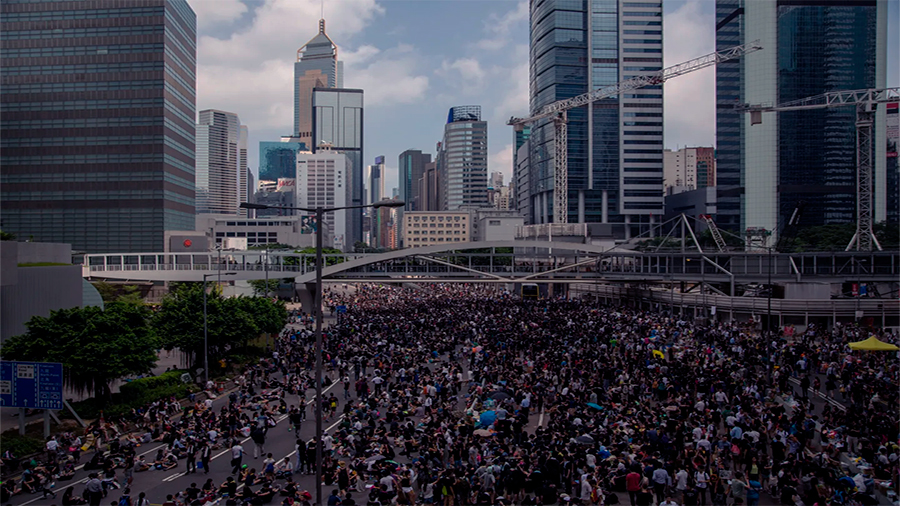Banks Under Pressure: How Strikes Reshape Credit, Liquidity, and Trust
Banks and Protests: How the Financial Sector Reacts to Mass Strikes
Mass protests might seem like issues for governments or city officials, but banks feel their effects almost immediately. When transit systems, refineries, or ports shut down, entire streams of payments stall. A port strike delays exporters’ invoices, a refinery shutdown affects transport companies, and city-wide demonstrations keep stores closed. For the banking system, this translates into missed repayments, higher credit drawdowns, and more clients asking for liquidity support. In these moments, banks must shift from ordinary operations to crisis management, balancing stability with flexibility. How they act shapes whether unrest remains a temporary setback or snowballs into a deeper financial problem.
Credit stress appears quickly
The first red flag in times of protest is usually credit risk. When companies can’t operate, their revenue collapses faster than their costs. A logistics company facing blockades still owes lease payments and fuel contracts; a restaurant located near protest zones still needs to pay rent and staff. Banks see this immediately in higher usage of credit lines and overdrafts. Requests for payment extensions pile up, while some borrowers ask for restructuring before they officially miss a payment. International accounting rules such as IFRS 9 and CECL require banks to provision earlier once credit risk rises, so finance teams increase loss buffers. Industries like transport, retail, and tourism often move into the “high alert” category first. For banks, the goal is to support clients without turning short-term stress into long-term non-performing loans.
Managing liquidity under pressure
Mass strikes don’t only disrupt clients; they also create liquidity swings. If protests spark panic, cash withdrawals rise sharply. At the same time, corporations often draw on revolving credit facilities as a precaution. Treasury teams within banks respond by preparing extra collateral for central banks, lengthening their funding maturities, and adjusting payment systems to handle spikes in transactions. During the French pension protests, for example, several banks had to rebalance ATMs in affected regions more frequently, while also encouraging clients to switch to digital payments. Liquidity buffers are crucial, since one failed settlement or frozen payment can undermine confidence across the system.
Operations and staff safety
Protests also test the physical and digital resilience of financial institutions. Some branches close for safety, others shorten hours, and staff may be moved to remote setups or backup sites. Business continuity teams ensure that payment clearing, fraud monitoring, and FX settlements continue uninterrupted, often shifting tasks across data centers or even to other countries. After major unrest in South Africa in 2021, banks rebuilt damaged branches with reinforced security and invested more heavily in mobile and online channels. These adjustments turned short-term crisis responses into long-term operational upgrades.

The role of insurance in limiting losses
Insurance can cushion the financial blow from unrest, though its coverage is often partial. Business interruption insurance may cover lost income, helping borrowers keep up with obligations. However, strike and riot coverage is usually optional, and many businesses discover too late that their policies exclude unrest. In South Africa, a state-backed pool called Sasria paid out large sums after protests, indirectly reducing credit losses for banks. Elsewhere, lack of insurance often leaves banks exposed, forcing them to decide between restructuring loans or absorbing defaults. As a result, lenders increasingly assess clients’ insurance positions when approving loans in high-risk areas.
How banks adjust lending strategies
One of the hardest choices banks face during unrest is whether to tighten lending. Raising interest rates and reducing credit availability makes sense from a risk perspective but risks choking small businesses that need liquidity to survive. The compromise many institutions adopt is segmentation: continuing to finance essential sectors like food supply and healthcare, while limiting discretionary lending. In Chile’s 2019 protests, for instance, banks introduced targeted loan rescheduling for small businesses rather than a blanket freeze. This reduced defaults without worsening the downturn.
Information flows and decision-making speed
Protests evolve quickly, often organized on digital platforms. Banks have adapted by building monitoring systems that combine social media signals, transport shutdowns, and client transaction data. This real-time intelligence helps them predict where liquidity will be needed and which sectors are under pressure. Early action—such as offering repayment extensions before due dates or adjusting digital transaction limits—prevents panic and builds trust with clients. The difference between acting early and reacting late often determines how much damage appears in the next quarterly earnings.
Regulatory frameworks and rating agencies
When unrest lasts more than a few days, regulators usually intervene. Central banks may provide liquidity support or temporary relief rules for loan classification. Supervisors sometimes allow payment holidays to be standardized across the system, avoiding competitive disadvantage between banks. Rating agencies monitor these situations closely, watching for rising non-performing loan ratios and deteriorating deposit bases. Their outlooks can raise funding costs for banks immediately. Clear, proactive communication with regulators and investors is crucial—silence can do more damage than admitting problems early.
Which sectors banks watch most closely
Some industries are always more exposed than others. Retailers, restaurants, and tourism operators face immediate revenue hits during unrest. Logistics and fuel distribution can become choke points if blockades last more than a few days. Manufacturing plants dependent on just-in-time delivery also run into trouble quickly. For consumer finance, delinquencies tend to rise among borrowers with irregular income. Banks track these sectors daily, often moving them into higher-risk categories in their credit monitoring systems. This helps them prepare tailored responses rather than bluntly restricting all lending.
Examples from recent unrest
France: During the pension reform protests, transport disruptions and fuel shortages created liquidity challenges for SMEs. Banks quietly offered short-term repayment holidays while coordinating with regulators to ensure stability in the wider system.
Chile: In 2019, widespread demonstrations led to targeted rescheduling programs for small businesses, which prevented a sharp rise in non-performing loans. By differentiating between borrowers, banks avoided a credit crunch.
Hong Kong: Banks had to frequently close and reopen branches depending on protest intensity. ATMs were kept stocked at all times to prevent public panic. The unrest accelerated digital adoption, leaving a lasting shift in how clients interacted with financial institutions.
Trade finance and cross-border effects
Strikes at ports and airports don’t just affect local economies—they ripple through global trade finance. Letters of credit can expire, shipments are delayed, and companies incur demurrage charges. Banks handling trade transactions often extend deadlines or accept scanned documents temporarily to keep deals alive. Without such flexibility, global supply chains could seize up even faster. These adjustments show how localized protests can quickly have international financial consequences.

Reputation and long-term trust
Beyond balance sheets, banks must think about how they are perceived during unrest. Being too strict risks looking predatory, while being too lenient risks shareholder backlash. Clients, however, remember which banks communicated clearly, offered real relief, and kept essential services running. In today’s environment, reputation is part of risk management. A bank that supports communities during hardship often strengthens long-term customer loyalty, which in turn supports profitability when normalcy returns.
Turning crises into lasting improvements
Every wave of unrest leaves the financial sector more resilient. Processes that failed under stress get automated, liquidity buffers are strengthened, and crisis playbooks are updated. In South Africa, for example, the experience of 2021 accelerated investments in branch security and mobile banking, reducing vulnerability to future disruptions. Banks know protests won’t disappear; what matters is whether they can keep the system working through them. Each crisis becomes a test and, if handled well, an opportunity to strengthen financial stability.
Conclusion
Protests create financial ripples that quickly reach banks. They strain credit quality, liquidity, and daily operations, while forcing tough decisions on lending and communication. Yet, with careful management, banks can act as stabilizers rather than amplifiers of crisis. The playbook is familiar—monitor risks early, preserve liquidity, support viable borrowers, protect staff, and maintain transparency with regulators. Done well, these steps allow banks to absorb shocks and continue serving the economy. Done poorly, they risk spreading unrest from the streets into the financial system itself. In the end, resilience comes from preparation and steady execution, not from avoiding turbulence altogether.



